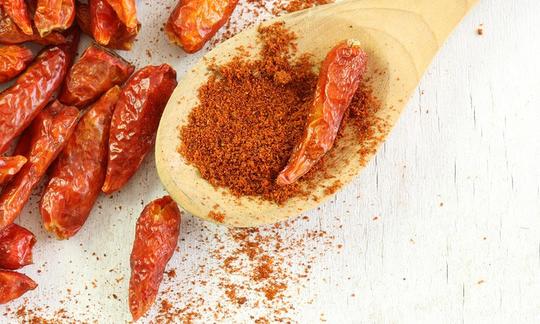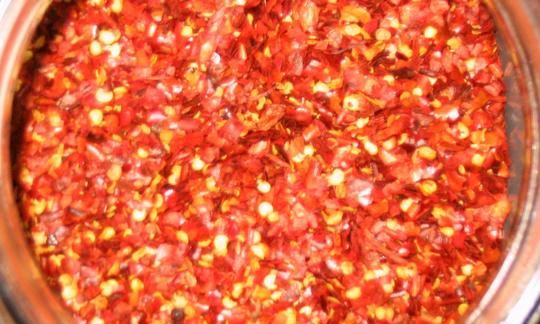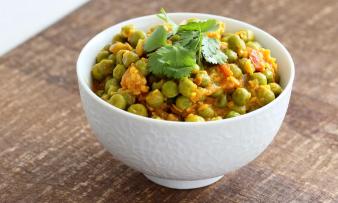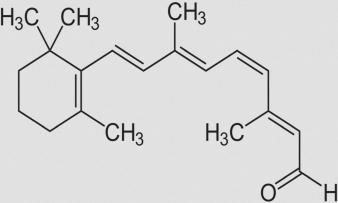Table of contents
Cayenne pepper usually refers to the finely ground powder made from dried cayenne peppers, which can be raw depending on how it is produced - but it also refers to the plant itself. Preferably in organic quality, it is a popular ingredient for spicing up and seasoning various dishes.
Use in the kitchen
What is cayenne pepper? The name "cayenne pepper" refers both to the plant ( Capsicum annuum var. acuminatum ) and to the powder made from dried and ground cayenne fruits. However, people usually talk about the spice and not the plant or the pods themselves. Cayenne pepper therefore has no connection with the commonly knownreal pepper . The powder has a sharp, slightly smoky and bitter taste and is one of the hottest spices used in the kitchen. Cayenne pepper is even hotter than chili powder . It is now used worldwide. It is very popular in Asian, European, American and African cuisine and is mainly used to season and spiciness dishes. Similar to chili powder or hot paprika powder, it can be used as an ingredient in stews, casseroles , ragouts, pasta dishes, curries , pastes, marinades or sauces. Cayenne pepper can also lead to an interesting taste experience in combination with sweet fruits (e.g. watermelons and pistachios ) or chocolate . In addition, the metabolism-stimulating effect of cayenne pepper is particularly popular in vegetable juices, e.g. with carrots , oranges , celery ( stalk or tuber ), tomatoes , ginger , lemons and limes .
Cayenne pepper is also part of Berbere, an Ethiopian spice blend that is usually used in stews and consists of nutmeg , fenugreek , coriander , cardamom , allspice , pepper, cumin , cayenne pepper, ginger and cloves .
Is cayenne pepper raw? It is difficult to verify whether the cayenne pepper available in stores is a raw food product and depends on the manufacturing process used. The term "raw food" is not subject to any controls and is associated with a great deal of trust in the producers. If you want to be sure, you can make cayenne pepper yourself.
Making your own
It is basically possible to make your own cayenne pepper. Use the process of making homemade chili powder as a guide. You can read about drying the fruit in the ingredient sun-dried chili peppers . Cayenne peppers are not usually available in European supermarkets. However, you can buy both the seeds for growing yourself and the dried pods online. Wear plastic gloves when working with chili peppers or wash your hands thoroughly with alcohol or vegetable oil afterwards. The substance "capsaicin", which is found in the placental tissue, the septa and the seeds, is responsible for the perceived spiciness of the pepper and is very irritating if it gets directly into the eyes, for example.
Vegan recipe for salad with avocado-cayenne pepper sauce
Ingredients (for 4 people): 1 cucumber , 1 carrot , 1 sweet pepper (red) , ½ red onion , ½ bunch of parsley , 1 avocado , 1 tbsp lemon juice , 1 tbsp rapeseed oil (cold-pressed) , ½ to 1 tsp cayenne pepper (organic), salt andpepper .
Preparation: Wash the cucumber and carrot and chop into small pieces. Wash the sweet pepper, remove the seeds and cut into bite-sized pieces. Wash the onion and cut into thin slices. Wash the parsley and chop finely. Mash the avocado with a fork, mix with lemon juice, rapeseed oil, cayenne pepper and season with salt and pepper. Put the vegetables in a bowl and mix with the sauce. Serve the vegan raw vegetable salad with the avocado-cayenne pepper sauce.
Vegan recipes with cayenne pepper (raw) can be found under the note: " Recipes that have the most of this ingredient ".
| Not only vegans or vegetarians should read this: Vegans often eat unhealthily. Avoidable nutritional mistakes . |
Purchasing - Storage
You can find cayenne pepper as a spice all year round at major retailers such as Coop , Migros , Spar , Aldi , Lidl , Rewe , Edeka , Hofer , Billa and in organic quality at organic supermarkets such as Denn's Biomarkt and Alnatura . Other good places to go are delicatessens or online retailers. Smaller supermarket chains such as Denner or Volg can offer cayenne pepper as part of selected promotions.
The availability of cayenne pepper varies depending on the size of the store, catchment area, etc. Our recorded food prices for the DA-CH countries can be found above under the ingredient image - and by clicking you can see their development at various suppliers.
Storage tips
Cayenne pepper should be stored in a cool, dry place. It is best to use an airtight container or a container made of dark glass.
Ingredients - Nutritional values - Calories
Here we realistically show you the ingredients of spices and herbs per 1 g (instead of per 100 g as usual).
1 g of cayenne pepper provides 3.18 kcal of energy and contains 0.17 g of fat, 0.57 g of carbohydrates and 0.12 g of protein. 1
Vitamin A , vitamin E and vitamin B6 are the most important essential nutrients that cayenne pepper offers. However, because the amount consumed is so small, they and the macronutrients do not contribute significantly to meeting the daily requirement. Far more important for the health value are the secondary plant substances in this ingredient, which can have an effect even in trace amounts. Although all herbs and spices have many health-promoting ingredients, we are deliberately avoiding the insubstantial buzzword "superfood".
Cayenne pepper also contains a lot of vitamin C (76 mg/100g; 96% of the daily requirement) 1 and is rich in secondary plant substances that are characterized by high antioxidant properties - including polyphenols, carotenoids and the spicy capsaicinoids (capsaicin and dihydrocapsaicin). 2
The complete ingredients of cayenne pepper (raw), the coverage of the daily requirement and comparison values with other ingredients can be found in our nutrient tables. In the article Nutrients explained you will get a detailed insight into the topic.
Health effects
Is cayenne pepper healthy? The health benefits of cayenne pepper are mainly due to the secondary plant substances it contains - especially capsaicin.
Applied externally, capsaicin has analgesic effects associated with diabetic neuropathy (damage to the nerves due to diabetes) and chronic musculoskeletal pain. Administered orally, it is used to increase bladder capacity and reduce incontinence in patients with bladder hyperactivity. The alkaloid can relieve postoperative nausea and vomiting when applied to acupressure points. It is also used to treat itching associated with kidney problems (uremic pruritus) and to protect the stomach from gastritis (inflammation of the stomach lining) caused by non-steroidal anti-inflammatory drugs. 3 It has a cholesterol-lowering effect and thus contributes to the prevention and treatment of coronary heart disease. 4 In a test model with rats, researchers were able to demonstrate an antihypertensive effect, although this still needs to be confirmed in clinical studies. 5
Animal studies have shown that capsaicin plays a positive role in weight control. However, the results of human research are controversial. Capsaicin supplementation in overweight or obese individuals appears to have rather modest effects on reducing BMI, body weight and chest circumference. 6 However, healthy weight loss depends on numerous factors. You can find a detailed article in the article Lose weight healthily and permanently .
Current research on cancer prevention suggests that capsaicin can act as both a carcinogen and a cancer-preventing agent. The anti-tumor effect depends heavily on the capsaicin concentration and can develop differently in different malignant tumors. Further well-controlled studies are needed to assess safety in combination with other standard medications or radiotherapy. 7
In a study with 29 healthy adults who consumed 1.8 g of cayenne pepper over a period of 5 days, only minor changes in the intestinal microbiota were observed. However, the researchers do not rule out that the amount administered may have been too small. 8
Studies often examine the effects of capsaicin in isolated and high doses. With regard to cayenne pepper, it is important to note that it usually contains only 1% capsaicin or less 9 - which means about 1 g per 100 g. As the latter study admits, it must be assumed that the health effects of cayenne pepper are also lower in the context of normal consumption.
Dangers - Intolerances - Side effects
The Federal Institute for Risk Assessment advises caution when consuming foods with a high capsaicin content (extremely hot chili sauces or chili extracts). Higher doses of capsaicin can cause mucous membrane irritation, nausea, vomiting or high blood pressure. 10 Current research suggests that acute ingestion of 25 mg of cayenne pepper per kilogram of body weight (approx. 250 μg capsaicin/kg body weight) can cause damage to the stomach lining. For a person weighing 60 kg, this means 1.5 g of cayenne pepper, which in turn corresponds to about half a teaspoon. 9 Children in particular should be cautious, as they can suffer serious poisoning more quickly. However, no acute health-damaging effects should occur within the scope of internationally accepted consumption. 10
People with a rare allergy to nightshade plants can have an allergic reaction or intolerance when eating chili flakes. The allergy spectrum is very individual and can change over time. 11 It is also possible for cross-allergies to develop, e.g. from existing allergies to birch pollen, grass pollen, cereal pollen or mugwort pollen. 11,12
Use as a recognized medicinal plant
Commission E describes the use of cayenne pepper fruits for painful muscle tension in the shoulders, arms and spine, 13 for example in the form of so-called Munari plasters. One Munari recipe contains cayenne pepper (or capsaicin) 14 and in a clinical study, repeated use had a positive effect on the relief of chronic lower back pain. 15
The European Scientific Cooperative on Phytotherapy ( ESCOP ) mentions the use of cayenne pepper for muscle pain, the treatment of joint wear (osteoarthritis), inflammatory rheumatic diseases (rheumatoid arthritis), nerve pain (neuralgia) such as shingles and nerve pain caused by diabetes, itching (intensely itchy and inflamed skin nodules (prurigo nodularis) caused by psoriasis) and dialysis (hemodialysis). 13
Ecological footprint - animal welfare
The ecological footprint of a food depends on various factors. The type of agricultural production (conventional vs. organic), seasonal, regional or domestic production or import by truck, ship or plane, different types of packaging and whether the goods are fresh or frozen all play a decisive role. 16
A Danish climate database calculates that one kg of fresh chili peppers will have a CO 2 footprint of 0.96 kg CO 2 eq/kg in 2024 (2021: 1.02 kg CO 2 eq/kg). However, the further processing steps lead to a much higher CO 2 footprint, as can be seen very clearly with fresh basil (0.33 kg CO 2 eq/kg) and dried basil (7.34 kg CO 2 eq/kg). We were unable to research any specific information on cayenne pepper. 17
ETH Zurich has measured the global biodiversity loss due to land occupation of the products that are most commonly consumed in Switzerland, including peppers (hot peppers) and chili peppers. 1 kg of peppers from Spain have an annual global biodiversity loss of 0.05*10^-12 gPDFeq/kg. Compared to other types of fruit and vegetables consumed in Switzerland, this value corresponds to a relatively low biodiversity loss. In contrast, 1 kg of hot peppers or chili from Sri Lanka has an annual global biodiversity loss of 2.47*10^-12 gPDFeq/kg. In order to reduce biodiversity loss, peppers or chili peppers from Spain are clearly preferable to those from Sri Lanka. 18
The water footprint for producing one kilogram of dried chilies (regardless of the variety) is 7365 liters. 19 Despite intensive research, we have not yet been able to determine the amount of water required to produce one kilogram of cayenne pepper in powder form. The following applies: Fresh, unpackaged, seasonal and regional vegetables have the lowest emissions. The more a product is processed, the greater its environmental impact is as a rule.
Detailed explanations of various sustainability indicators (such as ecological footprint, CO2 footprint, water footprint) can be found here .
Worldwide occurrence - cultivation
The origin of the cayenne pepper, as a member of the genus Capsicum , is believed to be in Central America, the Caribbean and possibly in what is now Venezuela and Colombia. This area is also considered to be the origin of the first domestication attempts. 20
Information on the current worldwide occurrence and cultivation of peppers can be found in the article Sweet peppers, red .
Industrial production
Commercial production is based on the process steps described for the ingredient hot paprika powder .
Further information
The cayenne pepper ( Capsicum annuum var. acuminatum ) is a variety of the species Capsicum annuum , belongs to the genus Capsicum and the nightshade family (Solanaceae). Current research counts 35 wild and 5 domesticated Capsicum species ( Capsicum annuum , C. frutescens , C. chinense , C. baccatum and C. pubescens ). 21
The spiciness of the Capsicum genus is measured in so-called Scoville units. The classification on the Scoville scale depends on the capsaicin it contains. The spiciness is generally divided into mild (0-700 Scoville units, e.g. sweet peppers), spicy (700-3000 Scoville units, e.g. sambal-Tabasco sauce), medium hot (3000-25,000 Scoville units, e.g. jalapeño ), hot (25,000-70,000 Scoville units, e.g. serrano or cayenne pepper) and very hot (over 80,000 Scoville units, e.g. habanero). Pure capsaicin has a value of 15-16 million Scoville units. However, there are types of pepper, such as the chili hybrid "Carolina Reaper", whose Scoville units even break the 2 million mark. 22
Unlike humans and other mammals, birds' nerve cells are structured in such a way that they do not perceive capsaicinoids as spicy. In addition, birds do not grind the seeds, travel longer distances and thus contribute to the more effective spread of the plants. 23
Alternative names
In English, cayenne pepper is called "cayenne pepper" or "red pepper".
Other uses
Capsaicin is a component of the chili extract "Oleoresin Capsicum", which is also contained in pepper sprays 23,24 and is used for self-defense against people and animals. 23













Comments